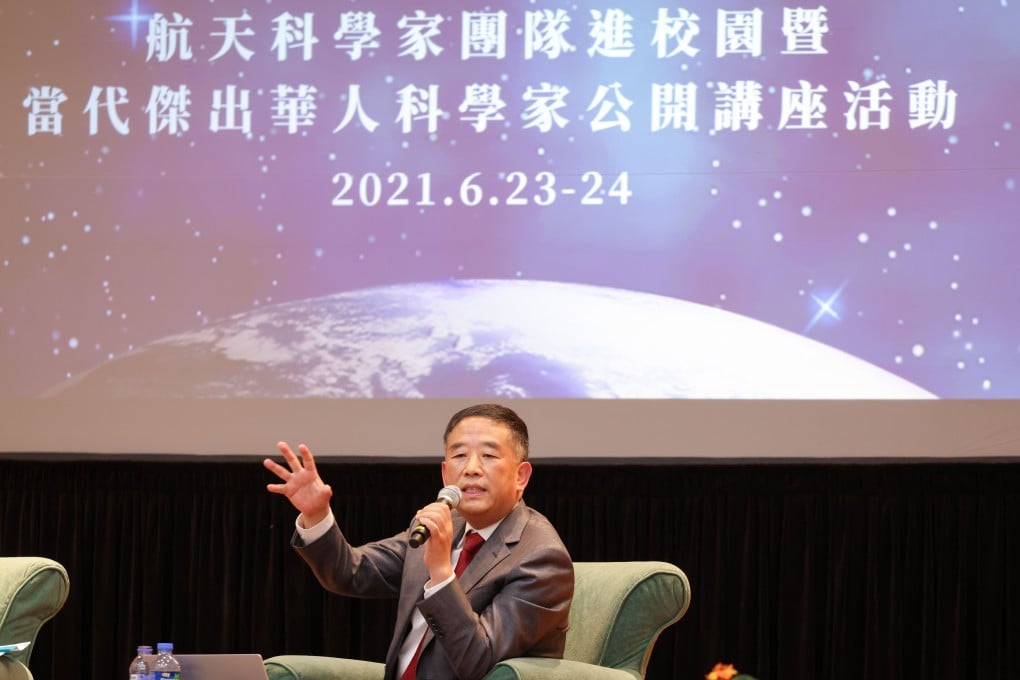Chinese space engineers launch four-day trip to Hong Kong, with residents getting chance to see rock samples retrieved from moon’s surface
- Delegation of six of the nation’s top members of space programme giving lectures at University of Hong Kong, and Polytechnic University
- Chief engineer in charge of Chang’e 5 mission highlights challenge of recovering lunar debris 38,000km away

The lunar debris has arrived along with a delegation of six top Chinese space engineers and designers, who launched a four-day visit to Hong Kong on Wednesday.
One of them, Hu Hao, chief engineer in charge of the Chang’e 5 mission to bring moon rocks back to Earth, called the mission challenging during a lecture at the University of Hong Kong (HKU).
“Collecting samples from the moon involved a lot of uncertainties,” he said. “The situation on the moon was unknown and the soil condition on the landing site was unknown. There were a lot of challenges. And that we could bring back some 1,731 grams of samples to the Earth. It signalled a breakthrough of China’s space technology.”

01:57
Chinese astronauts explore space station that will be their home for three months
Hu, the chief designer of the third phase of China’s lunar exploration project, also said controlling a device some 380,000km away was no easy task.